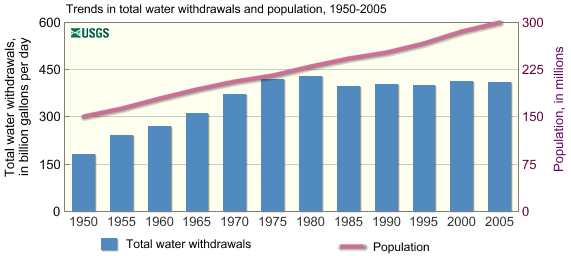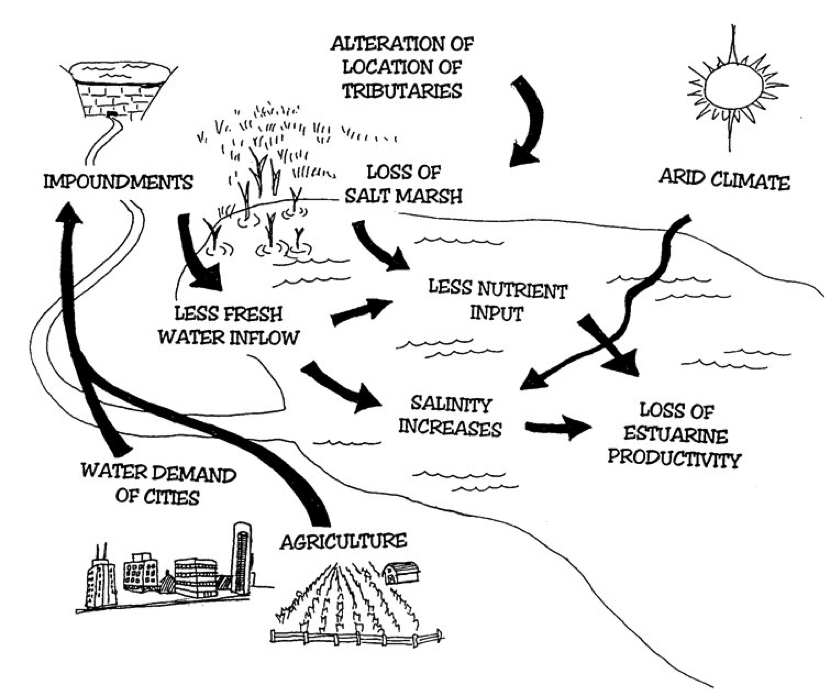The term global changes refers to changes in the environment caused by climate and human systems that may alter the capacity of the Earth to sustain renewable resources. Coastal areas are especially vulnerable to global changes due to the characteristically high human densities that occur in those regions (Ronnback et al. 2007). One major component of global change in coastal areas is the removal of freshwater from rivers and streams for anthropogenic use before it reaches the coast. Since the 1960s, dewatering has doubled (see below figure) and now almost 60% of the Earth’s runoff is captured and therefore alters three kinds of environmental flows; instream flow, inflow, and outflow.

The profound anthropogenic and climatic influences on freshwater are illustrated the diagram below. The depiction shows the cascading effects downstream from a number of upstream human diversions. Impounded water decreases inflows to estuaries and therefore decreases nutrients carried by inflows. Decreased inflows and nutrients also causes salinity to increase, which causes loss of productivity of estuarine organisms that have a confined range of salinity tolerances and rely on nutrients for life processes, and results in decreased predators who rely on these organisms for consumption. The arid climate resulting from climate change also increases evaporation rates and temperatures, further compounding the negative affects of dewatering on the estuary.
